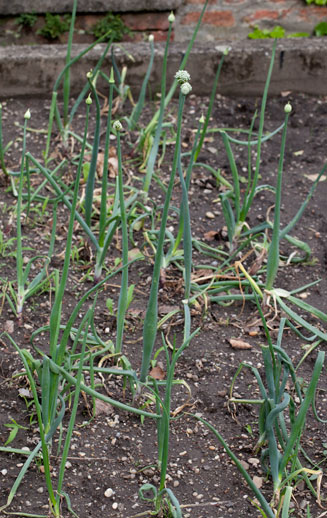|
Allium cepa (Onion, Spring onion, Shallot)
Eiee/ Hanyanese [Sesotho]
Life
> eukaryotes >
Archaeoplastida >
Chloroplastida
>
Charophyta > Streptophytina > Plantae (land plants)
> Tracheophyta (vascular plants) > Euphyllophyta > Lignophyta (woody plants)
> Spermatophyta (seed plants) > Angiospermae (flowering
plants)
> Monocotyledons > Order: Asparagales
> Family: Amaryllidaceae > Genus: Allium
 |
|
| Allium cepa, Vienna Botanical
Gardens, Austria. [photo
H.G.
Robertson, Iziko ©] |
|
Domesticated as a vegetable that is eaten raw or cooked.
Exact origins uncertain but thought to have been domesticated from one or more
species in Central Asia.
Allium cepa is a cultigen species and its wild
origins are not certain but seem to be derived from one or more species of Allium
found in the mountains of Central Asia. Onions were being cultivated by the
Egyptians by 3200 BC but their domestication probably goes back a lot further
than this although evidence is lacking because their remains do not preserve
well in archaeological deposits.
Onions have been bred in varying sizes, shapes and
colours. Spring Onions are small specimens of Allium cepa used raw in
salad. Shallots are small onions that grow as a bunch of bulbs.
Derivations of names
- Eiee/ Hanyanese [Sesotho]. From the Afrikaans word ui
(Moteetee & van Wyk 2006)
References
-
Moteetee, A. and van Wyk, B-E. 2006. Sesotho names for
exotic and indigenous edible plants in southern Africa. Bothalia
36(1): 25-32.
-
Phillips, R. & Rix, M. 1993. Vegetables.
Pan Books, London.
Text by Hamish Robertson |
